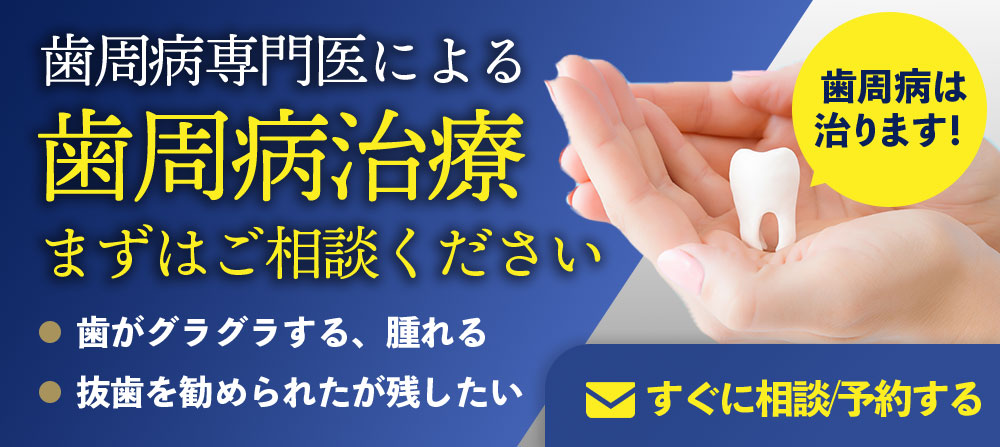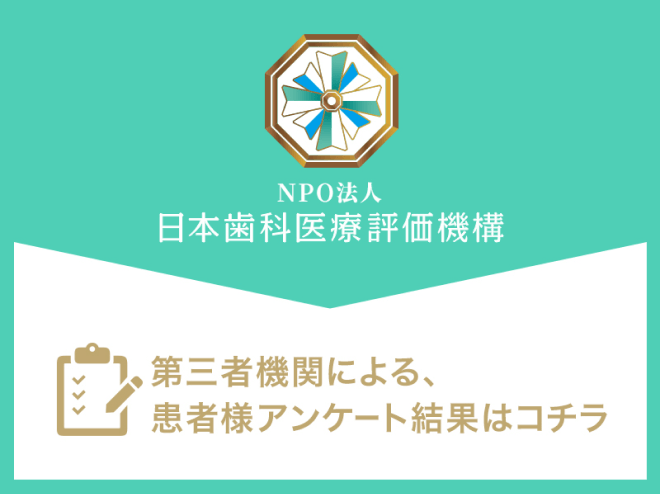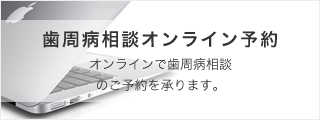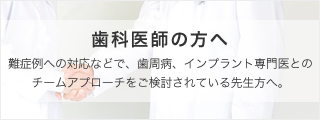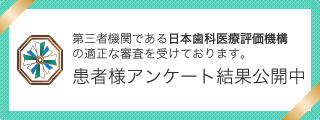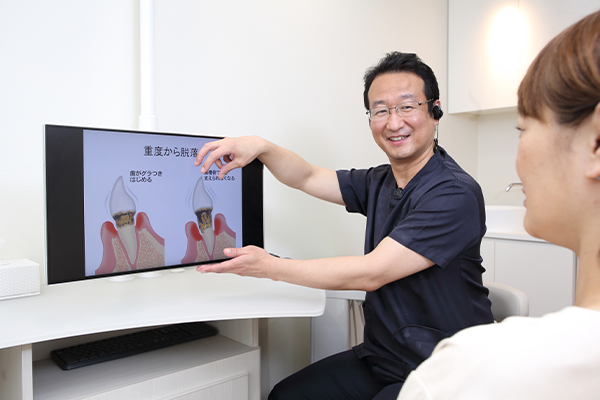
歯周病は親子・夫婦間で感染します。
歯周病原菌の種類
歯周病は、歯周病原菌への感染と、その菌の増殖によって発症します。
口腔内には800種類以上の細菌が存在しますが、そのほとんどが常在菌(歯周病の原因になりづらい細菌)です。その中で特に悪い影響を及ぼすことになる細菌は、A.a菌、P.g菌、P.i菌、B.f菌の4つです。
A.a菌(Actinobacillus actinomycetemcomitans)
比較的若年の歯周病患者から検出されます。
この菌は歯周病の進行が早く重症になるのが特徴です。
侵襲性歯周炎に罹患した口腔内からよく検出されます。
P.g菌(Porphyromonas gingivalis)
成人の重度歯周病患者から検出されます。特に歯周病の進行が著しい部位に高率に検出されます。
P.i菌(Prevotella intermedia)
進行した歯周病患者からP.g菌と共に検出されるのが特徴です。
B.f菌(Bacteroides forsythus)
歯周病患者の歯周組織破壊が激しい部位で高率に検出されます。
難治性歯周病の指標として重要な菌種です。
親子・夫婦間での感染
上述した歯周病原菌のうち、下記の細菌については、「うつる(感染する)」ことが報告されています。
A.a菌は、垂直感染(親子感染)
侵襲性歯周炎(若年性歯周炎)の原因菌とみられる、A.a菌は、遺伝による感染の可能性が高い、と報告されています。
この侵襲性歯周炎(若年性歯周炎)は、10代、20代で発症し、極めて進行が早く、若くして歯を失ってしまうこともある怖い歯周病です。
親が若くして歯を失った経験のある場合、子へのA.a菌の可能性も考えられますので、早めにお子さん細菌検査を受けさせることをお勧めします。
⇒ 侵襲性歯周炎(若年性歯周炎)のページへ
⇒ 細菌検査のページへ
P.g菌は、水平感染(夫婦、パートナー間での感染)
キスなどで相手に唾液が伝わることで感染すると考えられています。また、一度感染すると、その菌を駆逐することはできません。
また、あくまでも経験的にですが、旦那さん、もしくは奥様が重度歯周病の場合、そのお相手も歯周病にかかっているケースがよく見られます。
ただ、歯周病原菌の保有者が口腔内を衛生的に保っていて細菌の数が少なければ感染しません。是非一度、ご夫婦・パートナーで歯周病の検査と、必要に応じて治療を行ってください。
論文ソース:Transmission of periodontal bacteria and models of infection.
J Clin Periodontol. 2005;32 Suppl 6:16-27.
Abstract
BACKGROUND:
Bacteria play an essential role in the aetiology of periodontitis. Most bacterial species isolated from subgingival plaque are indigenous to the oral cavity. Actinobacillus actinomycetemcomitans and Porphyromonas gingivalis are detected infrequently in periodontal health, which makes these species prime candidates to study person-to-person transmission. The aim of the present study was to review the literature on transmission of these periodontal bacterial species.
METHOD:
We review the literature on bacterial typing techniques and summarize the information on clonal distribution of A. actinomycetemcomitans and P. gingivalis in family units based on different typing techniques in order to establish the likelihood for person-to-person transmission of these periodontal pathogens.
RESULTS:
Vertical transmission of A. actinomycetemcomitans is estimated to be between 30% and 60%, whereas vertical transmission of P. gingivalis has rarely been observed. Horizontal transmission between spouses ranges between 14% and 60% for A. actinomycetemcomitans and between 30% and 75% for P. gingivalis. There is some evidence to show that cohabitation with a periodontitis patient influences the periodontal status of the spouse; however, substantially more information is needed to prove this hypothesis.
CONCLUSIONS:
Transmission of putative periodontal pathogens between family members has been shown. The clinical consequences of these events have been poorly documented. Based on the current knowledge, screening for and prevention of transmission of specific virulent clones of A. actinomycetemcomitans may be feasible and effective in preventing some forms of periodontal disease. P. gingivalis is usually recovered from diseased adult subjects, and transmission of this pathogens seems largely restricted to adult individuals. Horizontal transmission of P. gingivalis may therefore be controlled by periodontal treatment involving elimination or significant suppression of the pathogen in diseased individuals and by a high standard of oral hygiene.
正確な診断と高度な歯科治療で
あなたの大切な歯を守ります。

清水歯科医院では、歯周病のプロフェッショナルが正確な検査に基づいた専門性の高い治療をご提供します。患者様の希望に合わせて幅広い治療のプランをご提案し、無理に押し付けることは致しません。歯周病にお悩みの方や他院で抜歯と言われてしまった方も、当院にぜひご相談ください。
- 歯周病・インプラント専門医
- 丁寧なカウンセリング
- セカンドオピニオン対応
- 科学的根拠に基づいた治療
銀座医院

■電話番号 03-6263-2600
■初診受付 03-6263-2636
■住所 東京都中央区銀座1-8-7 VORT銀座DDI 4F
(Google map を開く)
■診療日 月・水・金・土
(午前 9:00〜12:30/午後 14:00〜17:30)
※土曜日は17:00まで
■休診日 火・木・日・祝日
篠崎医院
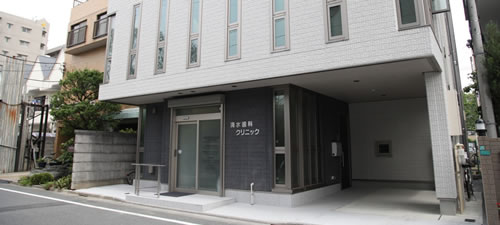
■電話番号 03-5879-7023
■初診受付 03-6263-2636
■住所 東京都江戸川区上篠崎4-27-12
(Google map を開く)
■診療日 月・火・水・金・土
(午前 9:30〜13:00/午後 14:00〜17:30)
※土曜日は9:00〜13:00/14:00〜17:00
■休診日 木・日・祝日
当院では患者様の満足度調査を実施しております。
少しでも患者さんにとってより良い⻭科医療を提供するため、
第三者機となるNPO法人 日本⻭科医療評価機構関に依頼をし、患者さんの満足度調査を行っています。
率直なご意見をいただき、改善すべき点は真摯に受け止めていきたいと思っております。
当院には患者さんの個人情報は一切伝えられませんので、是非、暖かいお言葉、お叱りのお言葉、たくさんお寄せ下さい。
NPO法人 日本⻭科医療評価機構の調査結果は、以下バナーよりご確認ください。
※日本歯科医療評価機構とは
日本⻭科医療評価機構は、ネットで⻭医者を検索してみたもののどこに行けばいいか分からない、
診療時間や場所のメリットだけではなく、本当に信頼して通える⻭医者を探したい、
そんな患者さんのために本当に信頼して通える⻭科医院を評価・認定することを目的した組織です。













